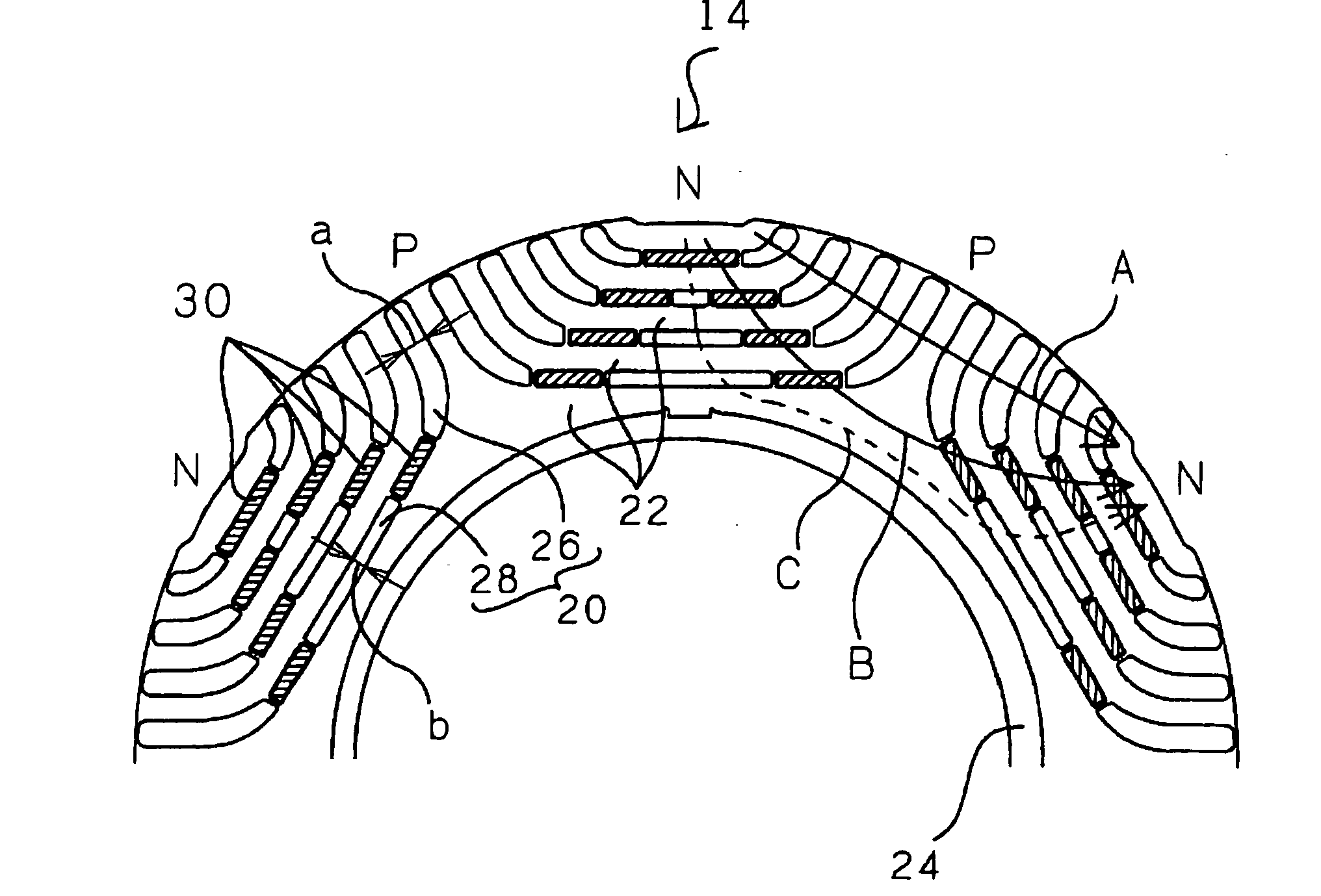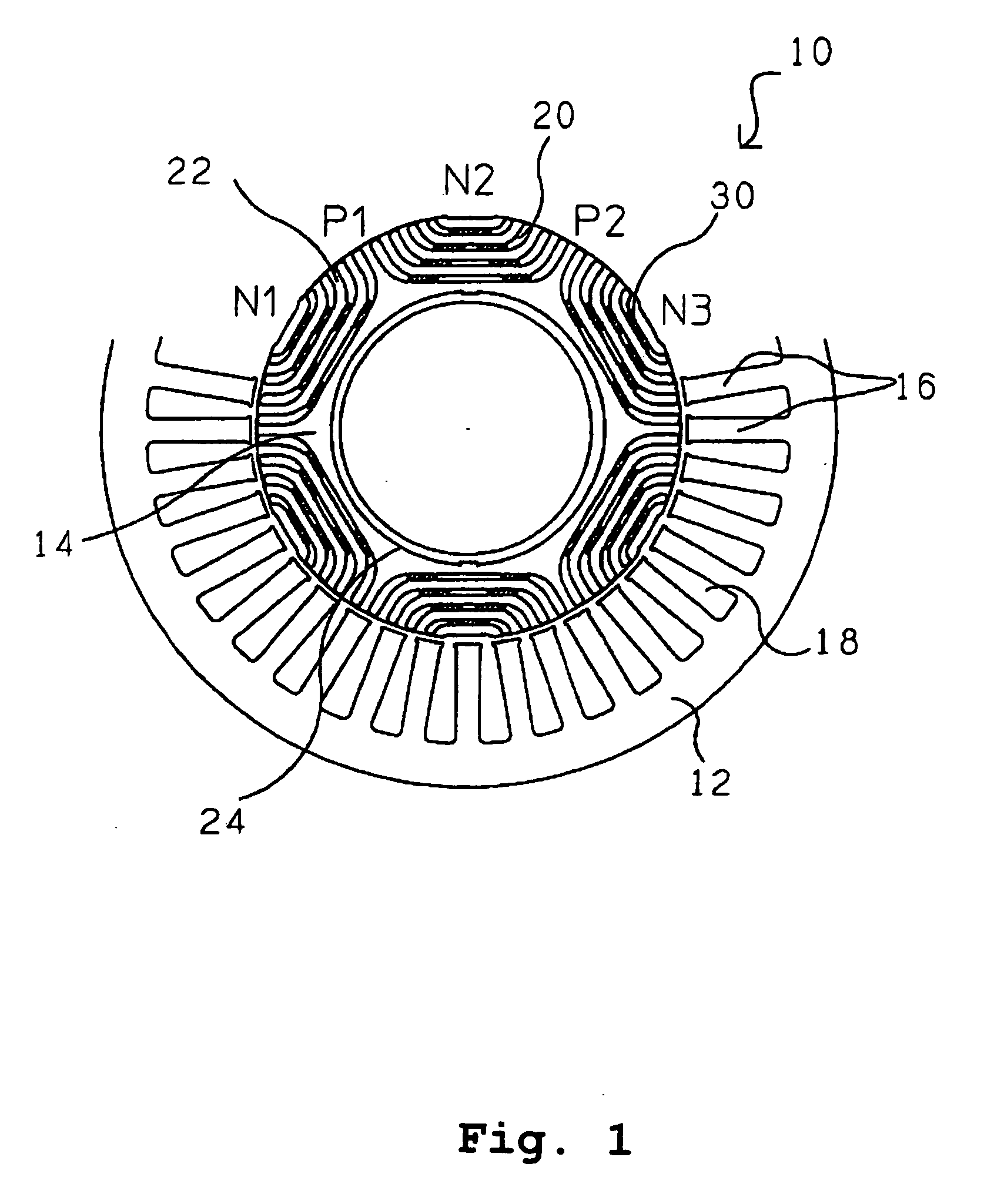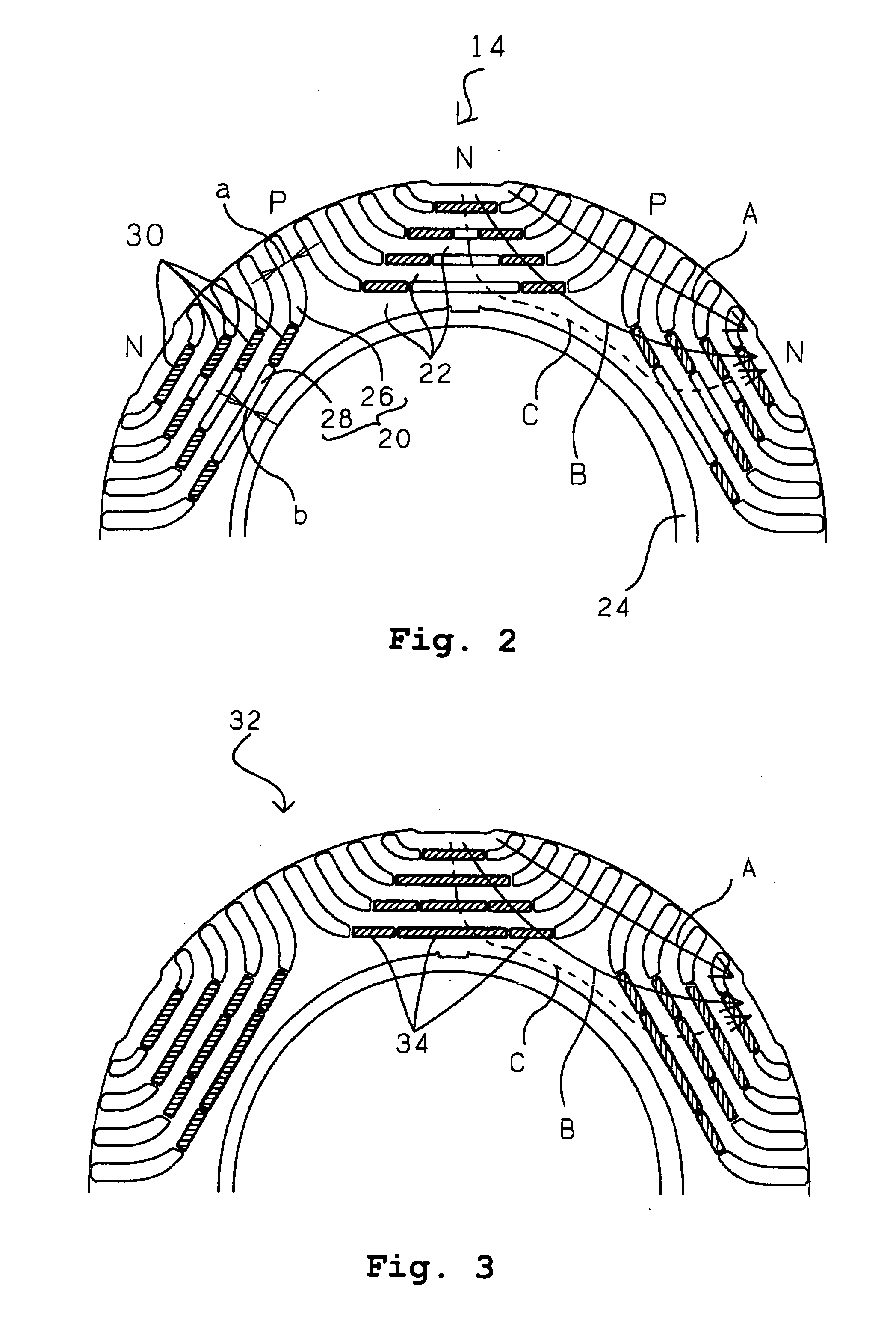Reluctance motor
- Summary
- Abstract
- Description
- Claims
- Application Information
AI Technical Summary
Benefits of technology
Problems solved by technology
Method used
Image
Examples
Embodiment Construction
[0028] By reference to the drawings, a preferred embodiment of the present invention will be described below. FIG. 1 schematically shows a sectional structure of an electric motor according to the present embodiment. An electric motor 10 of this embodiment comprises a stator 12 which produces a rotating field and a rotor 14 rotated by an interaction with the rotating field. The stator 12 has teeth 16 arranged along an inner circumference thereof, and a coil conductor wire (winding) is inserted in slots 18 between the teeth 16 so as to wind the teeth 16. The rotating field is generated by applying a predetermined current to the winding. The rotor 14 is formed in a roughly cylindrical shape by laminating flat rolled magnetic steel sheets and strips having been die-cut into a predetermined shape. The flat rolled magnetic steel sheets and strips to be laminated have a sectional form as shown in FIG. 1. More specifically, a plurality of slits 20 extending side by side are die-cut to form...
PUM
 Login to View More
Login to View More Abstract
Description
Claims
Application Information
 Login to View More
Login to View More - R&D
- Intellectual Property
- Life Sciences
- Materials
- Tech Scout
- Unparalleled Data Quality
- Higher Quality Content
- 60% Fewer Hallucinations
Browse by: Latest US Patents, China's latest patents, Technical Efficacy Thesaurus, Application Domain, Technology Topic, Popular Technical Reports.
© 2025 PatSnap. All rights reserved.Legal|Privacy policy|Modern Slavery Act Transparency Statement|Sitemap|About US| Contact US: help@patsnap.com



